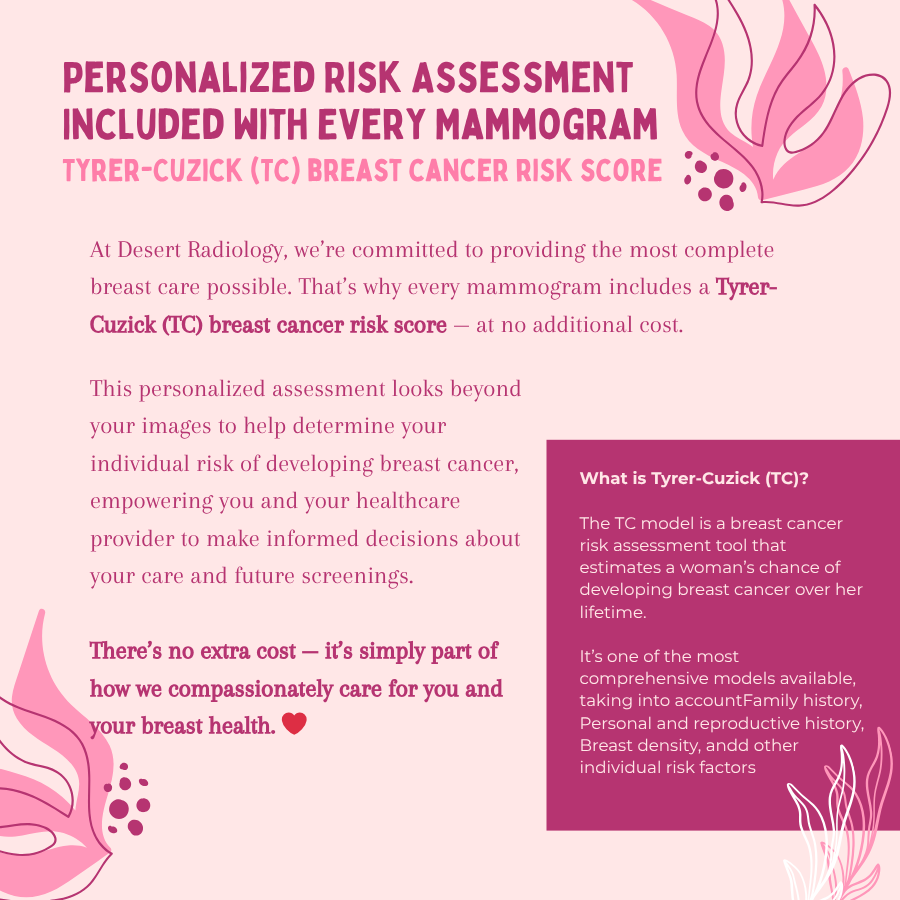Mammography, also known as a mammogram, is a specialized X-ray exam of the breast. It remains the most effective tool for early detection of breast tumors, often identifying changes in breast tissue up to two years before they can be felt by you or your doctor. Early detection is key—finding breast cancer sooner greatly improves the chances of successful treatment.
Why choose Mammography at Desert Radiology?
Advanced 3D Mammography for Clearer Results
We proudly offer 3D Mammography (Tomosynthesis)—the most advanced screening technology available today at all our imaigng centers. Unlike traditional mammograms that create a flat image, 3D mammography allows our radiologists to examine your breast tissue layer by layer. This means:
- 41% more invasive breast cancers are detected
- False positives are reduced by up to 40%
- Fewer callbacks, more peace of mind, and the best possible chance for early detection.
Learn more about the Genius 3D technology we use.
How Often Should You Have a Mammogram?
Current guidelines from the U.S. Department of Health and Human Services (HHS), American Cancer Society (ACS), American Medical Association (AMA), and American College of Radiology (ACR) recommend that women start annual screening mammograms at age 40.
If you have a personal or family history of breast cancer, or carry a genetic risk, the National Cancer Institute (NCI) advises speaking with your doctor about starting earlier or screening more frequently.
When Should You Schedule Your Mammogram?
- Ideally, schedule your mammogram one week after your period, when breasts are less likely to be tender.
- Avoid scheduling the week before your period if your breasts are usually sensitive.
- Before your appointment, talk with your doctor about any breast concerns, hormone use, past surgeries, or family history of breast cancer.
How Should You Prepare?
- On the day of your exam, do not wear lotion, deodorant, or powder under your arms or on your breasts, as these can show up on the images.
- Wear a two-piece outfit—you’ll be asked to remove clothing from the waist up and change into a gown that opens in the front.
- Leave jewelry at home if possible.
What to Expect During Your Mammogram
- A trained technologist will position your breast on a platform and gently compress it with a paddle.
- Compression helps spread out breast tissue so small abnormalities can be seen clearly, reduces radiation dose, and minimizes image blurring.
- You’ll briefly feel pressure as your breast is compressed—some women experience minor discomfort. Always tell the technologist if you feel pain; compression can be adjusted.
- The technologist will step behind a shield to take the images and may reposition you to capture different views.
- The entire exam typically takes about 30 minutes.
